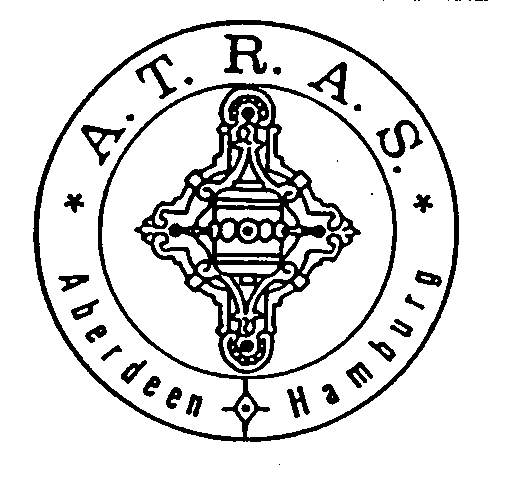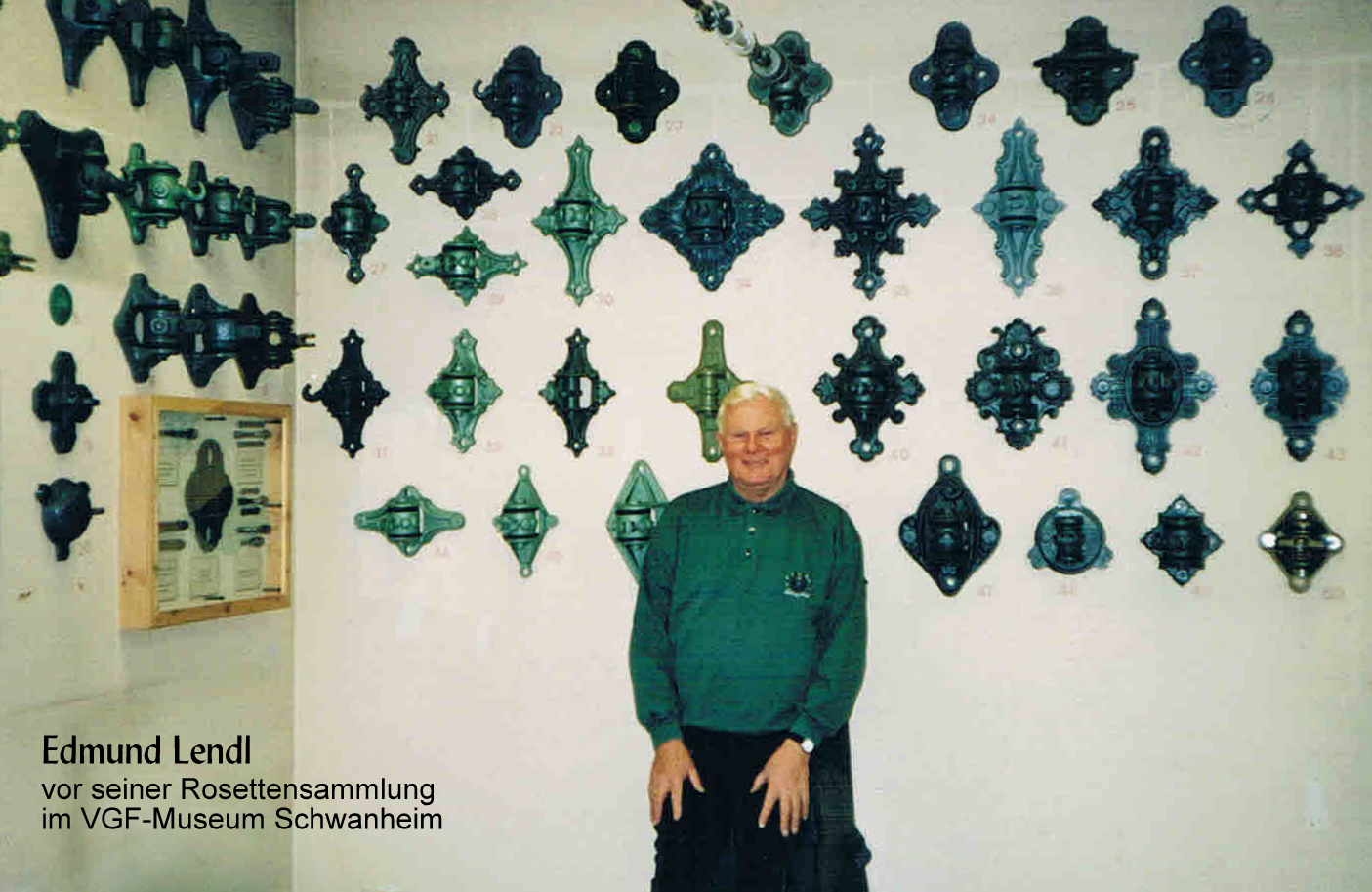
Tram-Rosetten in Hamburg
Eine Einführung
Dazu ein Artikel in den
Hamburger Nahverkehrsnachrichten
Tram-Rosetten in Europa
Newsletter

Tram-Rosetten in Hamburg
Eine Einführung
Dazu ein Artikel in den
Hamburger Nahverkehrsnachrichten
Tram-Rosetten in Europa
Newsletter
Wahrscheinlich haben Sie diese Internetseite aufgerufen, weil auch Ihnen schon mal die schmucken FAHRLEITUNGS- oder WANDROSETTEN an den Häusern aufgefallen sind oder Sie sogar bewusst Ausschau danach gehalten haben, wenn Sie in einer Stadt ehemaligen Straßenbahnstrecken auf die Spur kommen wollten. Ihr Interesse für diese Rosetten teilen Sie mit vielen anderen, doch wussten Sie, dass sich einige Interessierte sogar zu einer Gruppe zusammengefunden haben, die sich mit dem Thema auch ganz allgemein beschäftigt? Es ist dies die
als eine informelle Vereinigung von Verkehrsfreunden, die sich insbesondere der Sammlung von Infor
Mittlerweile sind allein in Europa bisher über 430 bestehende oder ehemalige Straßenbahnbetriebe bzw. -städte mit etwa 140 verschiedenen Rosettenformen erfasst worden. Dennoch steht noch eine große Zahl von Betrieben auch in Europa aus. So ist der Verein weiter stark an Informationen und foto
Wenn Sie sich an der Dokumentation beteiligen möchten, können Sie gerne eine Liste der bisher erforschten Betriebe sowie Bildtafeln zur Identifizierung der Rosettentypen z.Zt. bei Ingo Mecker unter der angegebenen Adresse anfordern (dazu wäre die Angabe der Stadt oder des Landes hilfreich, wo Sie Ihre Beobachtungen betreiben möchten).
Auf Initiative von ATRAS-Mitgliedern wurde bisher die Ausstellung von Wandrosetten im HISTORAMA in Ferlach/Kärnten, im Straßenbahnmuseum SCHWANHEIM der Straßenbahn Frankfurt/Main, bei der Museumsstraßenbahn des Vereins Verkehrsamateure und Museumsbahn e.V. in SCHÖNBERGER STRAND und im Historischen Straßenbahndepot in LEIPZIG realisiert. Auch anderenorts finden sich einzelne Rosetten als Exponate in öffentlichen Verkehrsmuseen oder von Verkehrs

In Hamburg und in Frankfurt/M. konnte sogar erreicht werden, dass in einigen Fällen Rosetten wieder an Häuser zurückversetzt wurden, um als Zeugnisse für einstmals daran vorbeiführende Straßenbahnstrecken zu dienen. Doch sollte es vor allem das Bestreben sein, alte Rosetten an Ort und Stelle vor einer Demontage zu bewahren. Deshalb:
Tramway Rosettes have been in place since the electric tram first started running, being used to support the tramway wires where suitable stone buildings capable of holding the rosettes and wires in place were available. Rosettes are used when poles were not suitable, and, over the years many different types, sizes and weights of these beautiful cast iron objects have been found and identified.
The Aberdeen Tramway Rosette Appreciation Society warmly welcome you to our site where you can find details of our researches since 1989 when Ingo Mecker, now our archivist based in Hamburg, made his first visits round Hamburg to find out how many rosettes were still in place and the different characteristics he found in the various different types even in that one city. Later Ingo’s researches had spread through Germany and other European countries and by building up his list of contacts the area of research, and speed of finds, speeded up.
In April 1994 in Aberdeen, Scotland, Harry Golding was interested in tramways and their overhead and a friend of his Bill Brown, beeing also interested, decided to do a count of the rosettes which remained after trams had ceased in May 1958 in the GRANITE CITY. To their surprise they found that there were over 250 „main“ rosettes of 5 different kinds on the old routes in Aberdeen, as well as up to 140 guard rosettes of a smaller size to stop telegraph wires falling on to the main overhead wires.
Having made a research list for themselves, copies were sent to the local council, and the National Tramway Museum Crich/Derbyshire England for their records and information. This list has been regularity updated since 1994 and regular two yearly inspections are made to check on the survivors.
In 1995 through the National Tramway Museum the two groups were introduced to each other and the
was founded so that research could continue throughout Britain, and Europe and there could be a central information point for the collection of all further information received. Since 1995 over 430 tramtowns have been investigated by contacts on the ground and we have to date identified 140 diffeent types of rosette both large and small, and heavy and light in weight. Ingo Mecker has played a main role in this important work as archivist along with Edmund Lendl (chief researcher) of Frankfurt/Main.
We present pictures of the various type of rosette found so far in our gallery, and we are very interested in seeing pictures in close up of any rosettes seen holding tram wires up anywhere worldwide. Information on town and street name also needed. By sharing such information with us you can help research a small as yet still little investigated part of tramway heritage and we are always happy to receive information either through the website or by snail mail if more convenient. But, please: See the attached list of all cities we already visited with declaration of the rosettes there found and, tables of type images with rosette names ATRAS is using. Therefore: Requested are only new information by using the given nomenclature. Thanks!
We are particularely interested in the use of rosettes in USA and, still as well as certain several cities of Europe not investigated till now. With 140 different designs (not all portrayed) of rosette so far found please help us expand the knowledge of these brilliantly cast pieces of metal on the old tramway routes of the world and the use of identical types in different cities. Look up and you will find some in most tramtowns!
If you would like to know more contact: